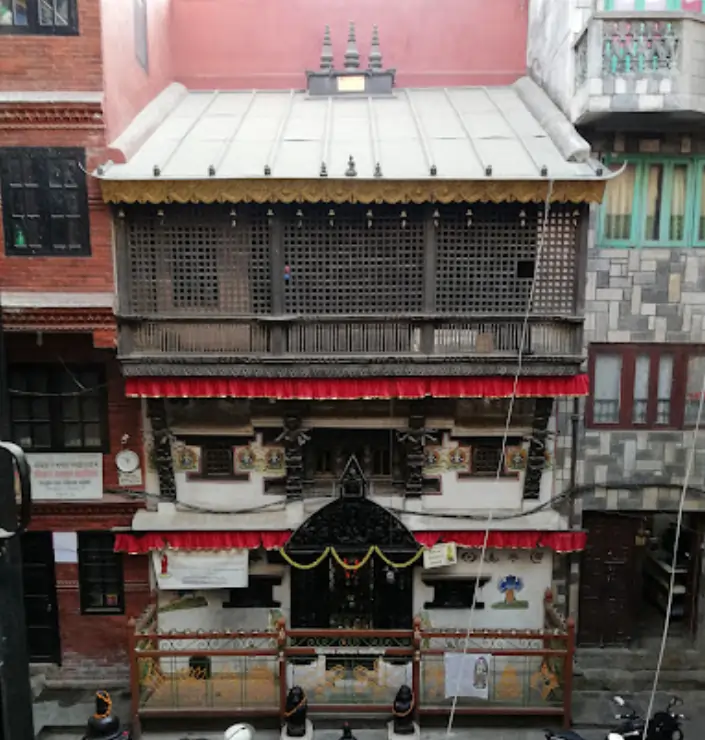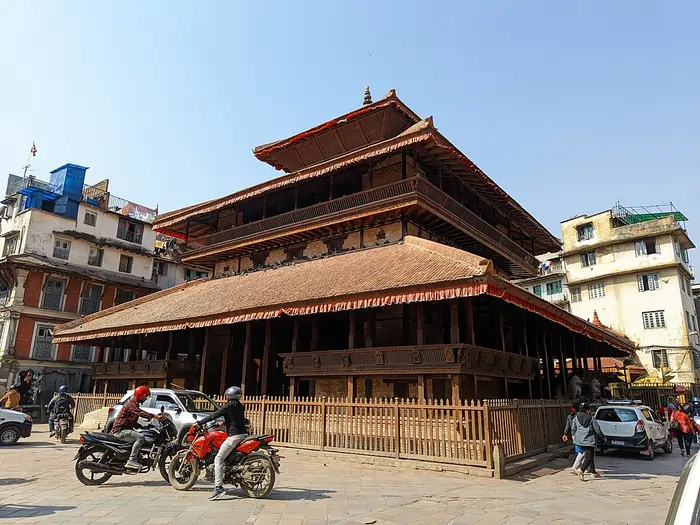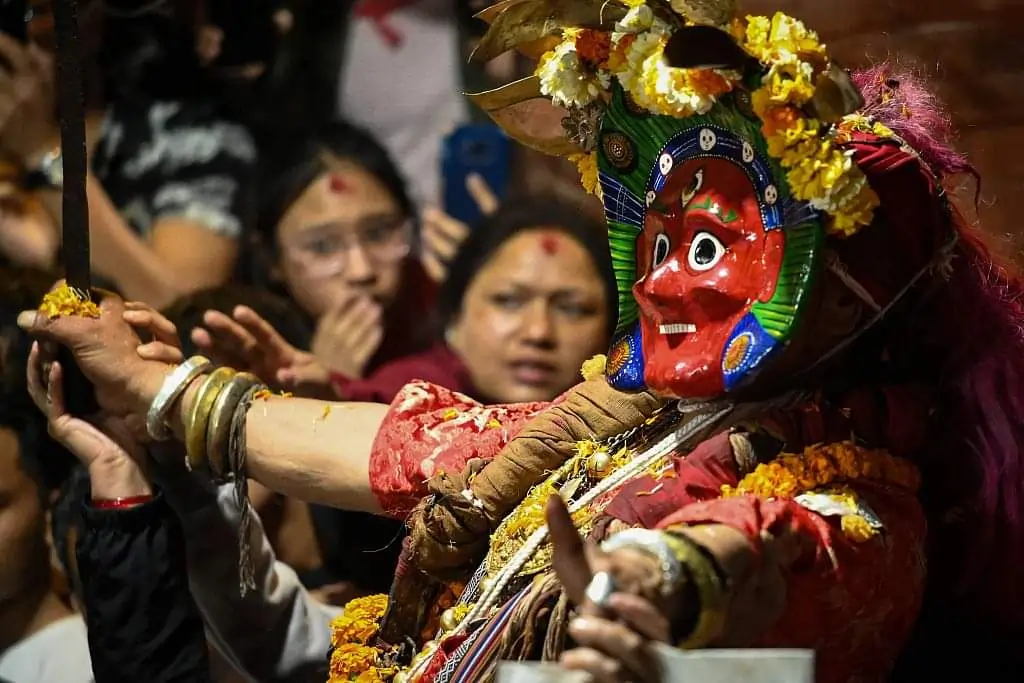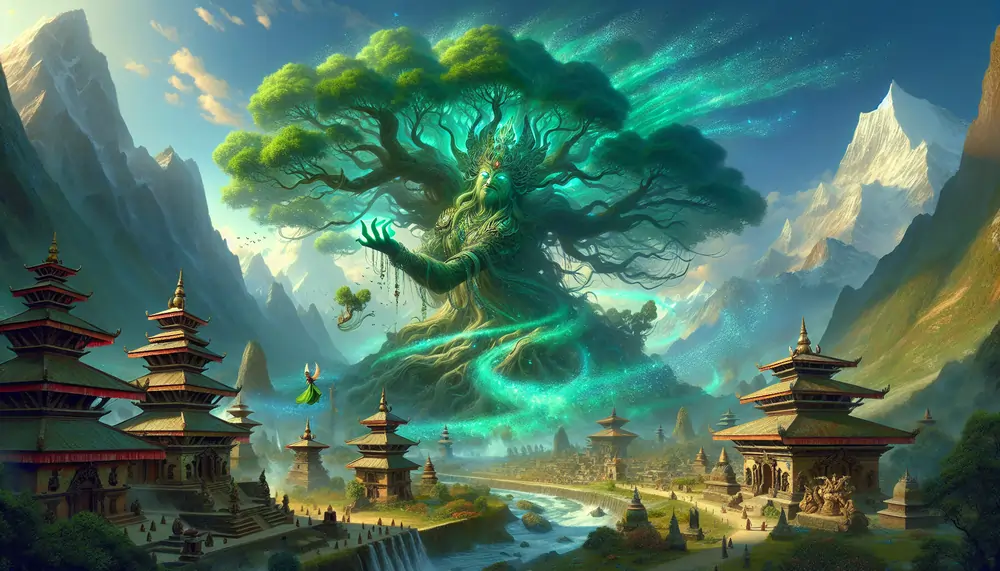Lila Bajra Bajracharya: The Divine Master of Vajrayana Buddhism
Lila Bajra Bajracharya, also spelled as Lila Vajra Vajracharya or Leela Vajra Vajracharya, in Sanskrit लीला बज्र बज्राचार्य, also known as Lilapa or Lilavajra, was a highly prominent master of Vajrayana Buddhism, known for his deep expertise in tantric practices. His name, “Lila,” translates from Sanskrit as “divine play” or “manifestation,” representing his profound connection to spiritual acts. His spiritual journey took him far beyond Nepal, earning him different names across regions. In India, he was known as Vilasavajra, and in Tibet, he was called Rolpa or Rolpai Dorje, where “Rolpa” means “Lila” and “Dorje” translates to “Vajra,” symbolizing his indestructible wisdom.
Early Life and Spiritual Legacy
Born in the 7th century in Kathmandu, Nepal, during the reign of King Jaya Deva II of the Lichhavi Dynasty, Lila Bajra’s influence remains strong today. Some accounts place his birth in 743 CE. He was the founder of Shikhamu Bahal, also known as Shreekhanda Tarumula Mahavihar, located in Maru Tole, Basantapur. As an expert in Vajrayana Buddhism and Tantric practices, he was the only Bajracharya listed among the 84 Mahasiddhas, a group of legendary tantric masters, cementing his place as a key figure in Buddhist history.
Lila Bajra’s studied and practiced Buddhism at Vikramasila Monastery in present-day Bihar, India, one of the leading Buddhist centers of the time, where he eventually became the head of the monastery. Upon his return to Nepal, he founded Shikhamu Bahal, also known as Shreekhanda Tarumula Mahavihar ( See in Map), a significant monastery in Maru Tole, Basantapur, Kathmandu. Shreekhanda Tarumula Mahavihar is the only bahal of Layaku Puin. Lila Bajra’s cross-cultural influence, evidenced by his various names and teachings, highlights his role in spreading Vajrayana Buddhism across Nepal, India, and Tibet, making him a divine master whose legacy continues to shape Buddhist practice.

The Creation of Kasthamandap
The story of Kasthamandap ( See in Map), one of Kathmandu’s most iconic landmarks, is deeply intertwined with the legendary figure of Lila Bajra Bajracharya. Kasthamandap, meaning “wooden pavilion” in Sanskrit (काष्ठमण्डप), is a large public shelter built entirely from the wood of a single tree. The structure, located in Maru Tole, Kathmandu near Hanumandhoka Durbar Square. Lila Bajra Bajracharya, is credited as the creator of this remarkable Kasthamandap.

According to medieval legend, one day Lila Bajra was attending a Shikali dance performance in the Dabu / Dabuli (a street stage) in front of the Nasa: Dya temple, located in present-day Maru Tole in Kathmandu. Nasa: Dya (नास: द्य:) is a Newari term meaning “god of grace,” associated with social skills and artistic performances, and Shikali is a ritual dance where performers wear the masks of various deities. As Lila Bajra watched the performance, he noticed a tall, unusual figure in the crowd, standing out from the rest. His intuition told him that something was amiss, so he decided to use his tantric powers to immobilize the mysterious figure.

As the dance continued and eventually concluded, the crowd dispersed, leaving the tall person behind, still frozen in place. Lila Bajra approached the figure and asked, “Who are you? Are you a god, a human, or a demon?” The tall figure responded, “I am Briksha Deva (वृक्षदेवः), the Tree Deity. Please release me from your spell, and I will give you anything you desire.” Realizing his mistake, Lila Bajra apologized, explaining that he had only immobilized the figure because of his unusual appearance. He then told Briksha Deva that his dream was to build a large public shelter (सतः) but he needed a vast amount of wood to do so.
Briksha Deva promised to provide all the wood needed for the construction of the shelter if Lila Bajra would free him from the spell. After Lila Bajra released him, Briksha Deva vanished, and in the very spot where he had stood, a massive tree sprouted. This miraculous tree provided enough wood to construct the entire Kasthamandap structure. Since the wood came from a single tree gifted by Briksha Deva, the pavilion was named Kasthamandap काष्ठमण्डप. The local people, in their native Newari language, referred to the structure as “Kath-Ma-Dau” “काठ-मा-डौं”, in English: wood-plant-built, meaning “built with wood.” Over time, the name of the shelter evolved into “Kathmandu” “काठमाडौं” which eventually became the name of Nepal’s capital city.

Once the Kasthamandap was completed, Lila Bajra organized an inauguration and consecration ceremony to celebrate the structure. He invited not only the people of Kathmandu but also the heavenly beings, including Briksha Deva, who had provided the wood. On the day of the ceremony, everyone arrived, but Briksha Deva did not show up. Without his presence, the consecration could not be completed, and the event was called off. Because of Briksha Deva’s absence, the structure also became known as Maru Satah (मरु सतः), with “Maru” meaning “not present” in the Newari language.
Disappointed by Briksha Deva’s no-show, Lila Bajra declared that the consecration of Kasthamandap would only be completed when the price of oil and salt became equal. To this day, that prophecy remains unfulfilled, and the Kasthamandap remains unconsecrated.
The legend of Kasthamandap doesn’t just end with the structure itself. It became a central part of Kathmandu’s history and culture, representing the city’s name and serving as a significant public gathering space for centuries. The story of how Lila Bajra Bajracharya used his tantric powers, encountered Briksha Deva, and built this remarkable structure from a single tree continues to inspire people in Nepal today, keeping alive the mystical connection between the city’s origins and its cultural heritage.
Lila Bajra’s Final Days: The Silent Meditation
In his later years, Lila Bajra Bajracharya is said to have entered the northeastern Agama, a sacred room within the inner sanctuary of Shikhamu Bahal, also known as Shreekhanda Tarumula Mahavihar in Kathmandu. This room, one of the four Agama rooms in the monastery, was used for worship and meditation. After entering the Agama, Lila Bajra never emerged. The door to this sacred room has remained closed ever since, and all rituals and offerings have continued to be performed outside the sealed entrance. Lila Bajra’s permanent retreat into this room became a source of mystery and reverence, marking his final act as a master of Vajrayana Buddhism.
Centuries later, during the Rana regime, Nepal experienced a devastating earthquake in 1933 CE. (1990 B.S.), which caused widespread destruction. During the reconstruction efforts, the Rana rulers decided to excavate Shikhamu Bahal. During the excavation, they discovered a body believed to be that of Lila Bajra, still in a state of meditative Samadhi. The body, found in a preserved form, was thought to be his, further cementing the legend of Lila Bajra’s spiritual power and enduring legacy.
Lila Bajra’s Spiritual Texts and Songs
Lila Bajra Bajracharya’s influence extends beyond his architectural contributions and mystical presence. He was also a prolific writer and composer of important Buddhist texts and spiritual songs that have been passed down through generations. His written works, including Sahaja Shunya Samaja (सहज शून्य समाज) and Shri Sahaja Siddhi (श्री सहज सिध्दि) are considered important Buddhist texts that explore the depths of Vajrayana philosophy and practice.
In addition to his texts, Lila Bajra composed spiritual songs, known as “Ca Cha” (चचा), which conveyed his teachings through music and poetry. Some of his most renowned Ca Cha include Shri Hebajra Nairatma (श्री हेबज्र नैरात्मा), Hada Bharan (हाडाभरण), and Bajramayabhoomi (बज्रमयभूमि). These songs continue to be revered by Buddhist practitioners and scholars for their insight into tantric practices and the spiritual journey of enlightenment, further solidifying Lila Bajra’s place as a master of Vajrayana Buddhism.
Conclusion: A Legacy Rooted in Spirituality and Culture
Lila Bajra Bajracharya’s life and legacy stand as a testament to his profound influence on Vajrayana Buddhism, tantric practices, and the cultural heritage of Nepal. As both a spiritual leader and a visionary, his contributions reached far beyond his lifetime. From founding Shikhamu Bahal to constructing the legendary Kasthamandap, Lila Bajra’s impact on the religious and architectural landscape of Kathmandu is undeniable. His writings and spiritual songs continue to inspire Buddhist scholars and practitioners, while the stories of his mystical encounters and final days in meditation highlight the enduring power of his teachings. Though centuries have passed, Lila Bajra remains a central figure in Nepal’s spiritual history, his legacy forever intertwined with the culture and identity of the city that still bears the name Kathmandu, a city born from the divine acts of a master.
Frequently Asked Questions
1. Who was Lila Bajra Bajracharya?
Lila Bajra Bajracharya, also known as Lilapa or Lilavajra, was a 7th-century master of Vajrayana Buddhism and a renowned tantric practitioner. He was the founder of Shikhamu Bahal and credited with constructing Kasthamandap in Kathmandu.
2. When and where was Lila Bajra Bajracharya born?
Lila Bajra was born around 743 CE. in Kathmandu, Nepal, during the reign of King Java Deva II of the Lichhavi Dynasty.
3. What is Kasthamandap, and who built it?
Kasthamandap is a public shelter in Kathmandu, built entirely from the wood of a single tree. According to legend, Lila Bajra immobilized Briksha Deva, a tree deity, who then gifted him the wood to build the shelter.
4. Why is Kasthamandap also called Maru Satah?
Kasthamandap is also known as Maru Satah because Briksha Deva, the deity who gifted the wood for its construction, did not attend the consecration ceremony. In Newari, “Maru” means “not present.”
5. What happened to Lila Bajra in his final years?
Lila Bajra entered the northeastern Agama, a sacred room in Shikhamu Bahal, and never emerged. The door has remained closed since, with rituals performed outside.
6. What was discovered during the 1933 excavation of Shikhamu Bahal?
After the earthquake of 1933, an excavation revealed a body believed to be Lila Bajra’s, found in a meditative state of Samadhi.
7. What spiritual texts and songs did Lila Bajra write?
Lila Bajra authored key Buddhist texts like Sahaja Shunya Samaja and Shri Sahaja Siddhi. He also composed spiritual songs, or “Ca Cha,” including Shri Hebajra Nairatma and Bajramayabhoomi.
8. What is the significance of Lila Bajra’s legacy today?
Lila Bajra’s teachings, architecture, and spiritual writings continue to inspire and influence Vajrayana Buddhist practices and Nepalese culture. His creation, Kasthamandap, gave Kathmandu its name.
9. What does the word “Tantric” mean?
The term “Tantric” comes from the word Tantra, which means technique. A Tantric is someone who uses specific techniques or methods to solve problems efficiently and effectively.
10. Is it true that Tantrics are magicians or perform supernatural acts?
No, that is a myth often perpetuated by movies and popular media. A Tantric is not a magician but someone who applies methods for practical and spiritual purposes.
11. Why do some people associate Tantrics with fraud or superstition?
Like any field, there are fraudulent individuals who misuse the title for personal gain. This has led to misunderstandings about what Tantrics truly represent.
References
- Prasiddha Bajracharya, Badri Ratna Bajracharya, 1988
- MONASTICISM IN BUDDHISM OF NEPAL-MANDALA, Surendra Man Bajracharya, 2014
- BUDDHISM DURING EARLY MEDIEVAL NEPAL MANDALA, Indra Siddhi Bajracharya, 2014
- History of Nepalese Buddhism: From Mythological Tradition to the Lichhavi Period, Shanker Thapa, 2006
- Art of Lila Bajra Bajracharya, Sarad Shakya, Shantipur Magazine Edition 3
- https://tibetanbuddhistencyclopedia.com/en/index.php/The_Four_Pillars_of_Vajrayana_of_the_Kathmandu_Valley
- https://www.wisdomlib.org/definition/lilavajra
- https://en.wikipedia.org/wiki/Vikramashila

